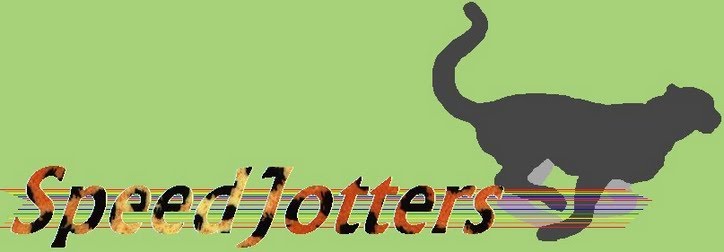Monday, December 07, 2009
Writing Program Notes by Satoko. H
As a music major, I had the opportunity of writing program notes for my own piano recital the other day. It was an interesting experience for me – As a performer, I always try to express lots of things just by playing my instrument (in my case, it is piano), without using any words. Having a recital is one way to have a place to express music by playing music. However, writing program notes is different from expressing music. It is a guide for the audience to what to listen to in the music, and to help them understand the music more, by giving them background information.
Technical writing in music could be biographical/historical studies of music, musical style studies, analysis of music, performance study, organological study, etc. These are academic and professional writings in music, in other words, they have lots of musical terminologies, that need to be explained when used for program notes. The audience one writes these program notes for is usually considered an audience of non-musicians who are interested in music (they are sometimes knowledgeable, but sometimes not).
In general, program notes include the components below:
•a brief introduction to the composer
•a section about the work’s historical context and the circumstances surrounding its composition
•a description of the work itself
You will need a good amount of research on the music, and time to analyze and interpret the music, sometimes using your knowledge of music theories.
In order to help the audience appreciate the music in the concert, however, you should not use too much technical language or too much poetic descriptions. The balance between the two is very important to make the information on the notes relevant and interesting.
Reference:
http://www.abrsm.org/resources/writingProgNotesApr05.pdf
http://www.uiowa.edu/~writingc/writers/handouts/WritingAboutMusic.shtml
Template Usage in Writing By Josh Miller
When first looking at documents most people can tell whether a template was used or not. Seeing the same thing all the time can be boring when looking over similar documents. I know using a template is the easiest way to put together a solid document, but the documents that tend to impress are put together in a way that is unique. I think mostly everyone would agree that it can be advantageous to think outside the box sometimes when writing.
It was a pleasure working with all of you. Best of luck with all of your future professional writing.
How to be persuasive in professional writing by Craig Holten
A Winning Argument
Research has found that people accept an argument for one of four reasons:
1. They perceive the writer or speaker as having credibility
2. They are won over by the research and evidence
3. They are convinced by logical reasoning
4. They are moved by emotional appeals.
If a writer can manage to incorporate most or all of the following ideas above, there will be a very good chance that you will convince or persuade your audience to agree with your stance!
I had a blast working with all of you and taking this class in general!
http://articlecomposition.suite101.com/article.cfm/the_art_of_persuasionPutting It All Together and Writing Completely by Raphael Costa
Writing completely is going to be the union of all the other tips I have posted before such as tips on writing effectively, clearly, correctly and concisely. I chose to write about these topics on purpose, so I could go over all the tips necessary for us to be great writers. There are some considerations that we have to make when writing a text completely. One of them is, write full sentences. Do not repeat, but include all of the essentials in each paragraph. Another tip is, pay attention to your writing so that you spell words correctly. If you are not sure of the spelling of a word, consult a dictionary or use the spell check function of your word processing program. Use correct punctuation and usage in order to make your text a reliable source of information for whoever is reading it.
It was really nice working with you on this blog!! Hopefully, I brought some interesting subjects to you guys and turned the lessons on how to write better into something fun and easy to learn. I can say that I learned a lot from your posts, so…let’s all become better writers from now on!!
References:
http://business-writing.proof-reading.com/
http://www.youtube.com/watch?v=F6S6dbzAzxQ&NR=1
Sunday, December 06, 2009
Presentations that WOW by Jamie Z.
I hoped you enjoyed the PhotoStory I created. Hopefully you gained a little bit of knowledge from it. I enjoyed working with all of you in creating and establishing Speed Jotters!
References:
http://www.the-eggman.com/writings/keystep1.html
http://presentationsoft.about.com/od/powerpointinbusiness/tp/071231resolutions.htm
http://presentationsoft.about.com/od/powerpointinbusiness/tp/bus_pres_tips.htm
Tuesday, December 01, 2009
When Use Wikis? by Satoko. H
Reference:
Library Leadership Network, Wikis -- When and How?
http://lln.lyrasis.org/node/378
Monday, November 30, 2009
Using Effective Tone in Business Writing by Josh Miller
• Use a formal tone- this is the norm for tone in business writing.
• Always be positive-even if the information is negative you need to keep the tone and writing positive
• Portray strength and confidence- You need to find the correct balance between confidence and cockiness, because if you are overconfident that might turn off the reader.
• Be honest and sincere- Honesty in writing is respected the same way it is in life, so always try to be honest and sincere.
The video above contains another very important tip which is to use the reader’s name. I don’t know about anyone else, but I am very impressed when I hear someone greet me by name at a restaurant or really anywhere. I do not have very much experience in business writing but I am assuming I would be impressed in seeing my name on paper also.
References:http://owl.english.purdue.edu/owl/resource/652/01/
Interview Tips for Noobs by Craig H.
This was where i really needed to make an impact on them. I waited too long to get this slip away from me, so I decided to do a little research on their company and was prepared to answer anything they asked. I ended up using on job or school experiences for every question they asked me and it boggled their mind. I knew i stood out from the rest when they told me "you answered every question with great examples." I followed up the day after and landed the job!
Job Interview Tips
Practice - Prepare for questions that they might ask, don't go in unprepared because you don't want to take too long to answer the questions.
Prepare - Make sure that you know about their company and policies in case they ask questions of the sort.
Get Ready - Make sure you wear the appropriate attire to the interview and if need be, bring your portfolio or resume with you.
Be On Time - Be on time to your interview!!! This means about 5 minutes early
Stay Calm - Try not to get nervous if they ask you a question that you aren't exactly sure about. It's important to stay relaxed.
Follow Up - Following up is very important after the interview, It shows you are very interested in the position.
http://jobsearch.about.com/cs/interviews/a/jobinterviewtip.htm
Presentations that Wow by Jamie Z.
- How to create effective presentation:
A. Set a goal and keep it before you present
- Decide what it is you would like to happen as a result of your presentation
B. Do your homework
- Research your topic- speak about something you have earned the right to talk about through experience and study
C. Plan the parts to your presentation
- List all the points you plan to cover in your presentation
D. Plan your format and delivery
- How you give your presentation can be more important then what you say
2. How to deliver effective presentations:
A. Analyze your audience
- Put yourself in the audience's shoes- try to understand your listener's level of understanding
B. Confidence is key
- Predetermine your mind to success. That's the main secret to being a good presenter: you have to be confident to show confidence
C. Make a powerful first impression
- The audience will judge you from your first appearance, your words and the sound of your voice. Remember, you cannot make first impressions twice.
D. Present with passion
- No matter what you are, we are all in sales. Sell your emotions and transfer your words to the audience to win them over
E. Keep your audience's attention
- Promise to tell the audience how they can get something they want out of your presentation
Tips on Writing Concisely by Raphael Costa
Conciseness makes a difference in your writing, especially when the message you are transmitting is complex and the receptor is uninformed about the subject. Many people confuse conciseness with brevity, which are not the same concept. As I said on my past posts about writing correctly and clearly, being concise, also defines whether your writing is going to be reliable or not.
I understand that when you are writing a text you want to emphasize the most important parts of it, using words such as VERY, A LOT, ABSOLUTELY, DEFINITELY, GREAT, LITERALLY, MAJOR, REALLY and many more. For you, passionate, that likes to use these words, I have a bad news for you! They are meaningless modifiers, which means that there is no need to use them in your text. I am going to give you more examples of words that can ruin the conciseness of your writing.
Avoid saying the same thing twice ( redundancy):
Redundancy Vs The Lean Version
12 midnight-------------------- midnight
12 noon ----------------------- noon
3 am in the morning ----------- 3 am
a person who is honest -------- an honest person
a total of 14 birds------------ 14 birds
biography of her life --------- biography
circle around ---------------- circle
Cut vague words such as: area, ASPECT, case, character, factor, field, kind, manner, nature, SITUATION, THING, type.
Cut or reduce wordy phrases such as: at the present time, at this point in time, for the purpose of, in order to, DUE TO THE FACT THAT, in my opinion, in spite of the fact that.
References:
http://www.youtube.com/watch?v=h5nw6-wIwmk
http://grammar.ccc.commnet.edu/grammar/concise.htm
write.oid.ucla.edu/handouts/WritingConcisely.rtf
Monday, November 23, 2009
How to Use Humor in Professional Writing By: Josh Miller
First you need know your audience. Not everyone is on the same level intellectually so you do not want your readers to feel stupid if they don’t understand your sense of humor. When using humor you need to direct it to a large audience, opposed to using a inside joke that only a few will get. Even if it is only directed to a select few, things can spread quickly at the workplace. Another thing you need to keep in mind is that humor needs to be used in moderation. Like I said before do you want to come across as a clown or a professional with a sense of humor? Lastly, if you are wondering if your humor is appropriate or not, then most likely it is not, so just don’t use it.
I am sure there is humor used in those peoples workplace!
References:http://www.essortment.com/all/businesshumor_rshx.htm
Writing Effective Meeting Minutes by Satoko. H
Remember, basic purposes to write a meeting minutes are
· To serve as an official record of a meeting for the future to take action,
· To remember what should be decided next,
· To share the information with readers who were not in the meeting.
These are all for the next steps to take actions, not to preserve the record permanently.
Though there is no standardized format for minutes of a meeting, effective meeting minutes usually contains the detail of the meeting, a chronological summary of the discussion and reports with the names of the presenters. Also, it includes announcements usually at the end, that call for action to be taken in the future.
An example of minutes of a meeting could look like the one below.

There are lots of free meeting minutes templates and formats online. Microsoft Office Online provides one too.
References:
http://non-profit-governance.suite101.com/article.cfm/how_to_take_meeting_minutes
Dobrin, Sidney I, Christopher J. Keller, Christian R. Weisser. Technical Communication in the Twenty-First Century. 2nd ed. New York: Pearson Custom Publishing, 2002.
Informal Reports by Craig H.
- Too much clip art
- Writing and picture clutter
- Right-justified pages
- Weird fonts
- Tiny type thats below 10 pt.
Works cited:http://74.125.47.132/search?q=cache:sJSk-02lDTcJ:web.viu.ca/atkinsona/Informal%2520Reports%2520(2).ppt+what+is+an+informal+report&cd=7&hl=en&ct=clnk&gl=ushttp://www.writing.engr.psu.edu/workbooks/reports.htmlAdvices on Writing Correctly by Raphael C.
When you think about writing correctly, you have to focus basically on two things: punctuation and spelling. These two things can make a big difference on whether you are a good writer or not. Whenever I read someone’s text and I find a lot of grammar mistakes or misspelled words, I feel like the subject being discussed is not reliable. If the grammar is bad and the words misspelled, the reader is not even going to consider the structure, the subject or the style of the text. This is why writing correctly is one of the most important elements to make you and your text reliable.
The video I have posted here caught my attention because it is a different way of teaching people how to write correctly and have fun at the same time. I thought this would be impossible to do because when we think of punctuation, or grammar, you associate it to being hard and boring. However, this video showed me that it is possible to get people interested on learning and actually participating in the classes.
Some Commonly Used and Misused Punctuation Marks
Comma (,) - Use a comma before and, but, or, nor, for, so, and yet, when they join independent clauses (unless the clauses are short).
Example: The game gets off to a slow start, but it gets exciting toward the end.
Apostrophe (') - To form the possessive case of a singular noun, add an apostrophe and an s.
Examples: Bob's car; One's home.
If the addition of an "s" produces an awkward sound, add only the apostrophe. Usually, this is when there is already a double "s" sound.
Examples: Moses'; for old times' sake; for goodness' sake.
Colon (:) - Use a colon to mean "note what follows."
Example: When you go to training, take these items: paper, pencil, and an alert mind.
Semicolon (;) - Use a semicolon between independent clauses not joined by and, but, nor, for, yet, and so.
Example: Read what you've written; don't just pass it on.
References:
http://www.youtube.com/watch?v=ItAcd_9_5-M
http://www.lrcom.com/tips/punctuation.htm
Saturday, November 21, 2009
Resume and Cover Letter Writing by Jamie Z.
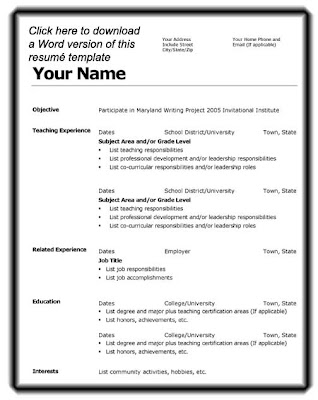
Here are some tips that I think will help you write effective resumes:
- Make sure your resume is a maximum of two pages long. If the resume is longer than two pages it is likely the employer will get bored and disregard your application.
- Only contain information and experience relevant to the particular job position you are applying for.
- List an objective at the beginning of your resume and target it to the job or company you are applying for.
- Make sure to find a resume template you can follow by in order to successfully meet professional standards.
- Consider if you need to add your "interests," in most cases it is not needed and takes up valuable space.
- Use bulletin points when describing job duties.
- Add any continuous education. For example, if you have taken a one hour course on 'Professional Customer Service,' add it to your resume. This shows the employer you are interested in furthering your knowledge and are not afraid to learn new things.
A cover letter typically accompanies each resume you send out. It may make the difference of obtaining a job interview or having your resume ignored. A cover letter should complement your resume, not duplicate it. I find it to be very important to spend the right amount of time and effort when creating your cover letter because it is often your earliest written contract with a potential employer, creating a critical first impression.
Here is a video I found on YouTube with quick and easy tips you can use to create an effective cover letter. I think it is really easy to understand and will help you with the necessary steps to create a great cover letter.
References
http://www.ehow.com/how_2158625_write-good-resume.html
Monday, November 16, 2009
Analyzing Your Audience by Satoko H.
To analyze your audience is to know your audience. You write because of your purpose, situation and/or your emotions, but your choice of word usage, phrases, and/or style depends on the reader; who they are, and how they are feeling about your messages. It is just like in our daily communication with friends and families. It is always crucial to be sensitive to the emotion of the reader, not only who the reader is, but what their context is. It would be easier to analyze their feelings by simplify them in either of three categories; positive, negative or neutral.
The YouTube video above is a TV commercial from American Airlines after the 9/11 attack. I think it is a good example of American Airlines’ analysis of the audience which could also apply to writing. Right after the 9/11 attack, the American people (audience) had a fear of flying, especially with American Airlines, since one of the airplanes that was hijacked was owned by American Airlines. However, in this American Airlines’ commercial, they succeeded in easing the fear of their customer’s fear of flying by stating that airlines exist to bear “the freedom to come and go anywhere anytime with confidence and peace of mind”. Also, to eliminate the associated negative image of the name “American”, they ended the commercial by stating, “proud to bear the name American”. They turned a possibly negative connotation into a positive one by analyzing their customer.
Importance of Follow-up Letters by Josh M.
The most important thing you can do to set you apart from those other applicants is the Follow-up Letter. When an employer is looking through all the resumes of the applicants, your follow up letter will reinforce your dedication to filling the position.
Here are a few tips to writing a successful Follow-up Letter.
• Thank them for their time
• Remind them of what you bring to the table
This letter really means a lot to the employer. The fact that a good majority does not even bother to write a Follow-up Letter will make you stand apart from the other applicants. With this economy, we need to do whatever we possibly can to enforce that we will be a valuable asset to their business. The Follow-up Letter is a great tool to obtaining employment.
References: http://searchwarp.com/swa38982.htm
Finding and Obtaining Employment by Craig H.
- Job networking websites -Forums on Professional websites and joining clubs in your related fields are a good way to put your foot in the door.
- Resume Websites - These are what i mentioned above, They allow you to post your resume and have a matching service for companies and peoples resumes.
- Specialized Job Sites - These help If you have been in the same field for a long time and something recently happened in your job. You can look at these sites to try to find another job that you have a specialty in.
- Company Websites - These are just ordinary company websites such as Verizon or Intel. You can directly send them a resume and application in order to try to land a job with them.
Tips on Writing Clearly by Raphael C.
This video gives us an important tip on how to write clearly, which is choosing the right words. Many people think that writing big words and complex sentence structures make you look smarter. As the video shows, this is not true. It is proved that people have a better understanding of what is being read if the words are short and widely known. The expert from the video illustrates the importance of writing clearly by giving examples throughout the presentation. One of them is the short and simple sentence “we need to talk about what I should say when I speak to the board next week” against the long and harder way to transmit the same message “I would like to request time on your calendar so we can have a meaningful discussion about my presentation to leadership at the board of directors meeting next week”. By this comparison, he proves his point of how important it is to choose the words when you writing an email, a business letter or many other kinds. Using big words just makes your message harder to understand, and this is not what a good writer wants. The easier it is to understand what is being communicated, the better the communicator.
References:
http://www.youtube.com/watch?v=z2cG1qY30t0
www.ClearAndConciseWriting.com
Using, Designing, and Creating Visuals by Jamie Z.
Visual design is often the key to producing professional quality documents in any business setting. Now, this is not to say content does not matter. A document with exceptional form but no substance will be more ineffective than the document with poor form. However, becoming more skilled in document layout and design can make any document more effective.
Design can be an issue for an entire document (in terms of page layout-headers/footers, margins, page size, etc) or for a particular page (where a graphic will go, the use of tables or columns, etc).
Here are some General Principles for using Visual Design:
- "design" pages/screens instead of just "writing" them (use storyboarding and thumbnail sketching to plan page layouts)
- determine a consistent layout for all pages of a document (where will words and pictures go versus white space)
- create visual hierarchy in your documents (show importance of elements via white space, bold, and font size)
- use color for effect (be aware of connotations of colors, don't over do it)
Visual Aids
Visual aids help a reader picture what you are trying to say. Usually, there are two types of visual aids, figures and tables. These two types of visual aids allow you to indicate things that might be a little difficult to describe with words alone when writing a business letter or even working on a presentation.
What does an effective visual aid do?
An effective visual aid- emphasizes important results or relationships
- compresses large amounts of data
- illuminates the focal point of your report
- encourages analysis and discussion
Below is an example of a graph that could possibly be used as a visual in Professional Writing.
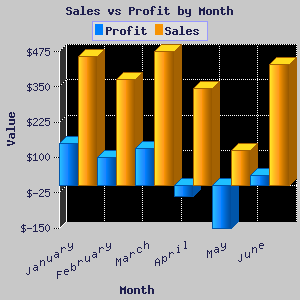
References
www.aiga.org/content.cfm/writing-101-visual-or-verbal
Monday, November 09, 2009
Writing Courteously by Satoko. H
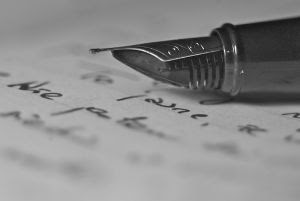
2. Clearly present the negative, only one time.
3. Suggest substitutes, compromises, solutions if any.
4. Finish with an affirmative, positive conclusion for the future relationship with the readers.
2. Date
3. Recipient’s address
4. Salutation or greeting
5. Introductory, Body, and Concluding Paragraphs
6. Appropriate closing phrase
7. Signature with your typewritten full name
Effective Logos by Josh M.
References:
http://www.artistmike.com/Bad-Logos/BadLogos.html
http://top7business.com/?id=1285
How to write an effective e-mail by raphael costa
References:
http://thinksimplenow.com/productivity/15-tips-for-writing-effective-email/
Monday, November 02, 2009
Jargon and Slang in Professional Writing by Jamie Zarr
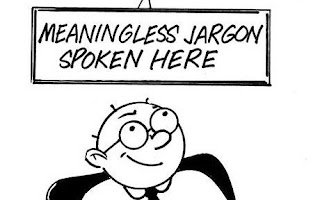
Jargon- the language, vocabulary, peculiar to a particular trade, profession, or group. Unintelligible or meaningless talk or writing; gibberish. Any talk or writing one does not understand.
Slang- very informal usage in vocabulary and idiom that is characteristically more metaphorical, playful, elliptical, vivid, and ephemeral than ordinary language. Speech and writing characterized by the use of vulgar and socially taboo vocabulary and idiomatic expressions.
Cultures have developed slang and jargon deliberately to exclude people outside their group. These slangs or jargons gain currency within an in-group who make up words and expressions to communicate with one another about things they often talk about. Because of this there can really be no understanding of the true meaning of the word outside the group.
Quotes about Jargon
- "Ours is the age of substitutes: instead of language, we have jargon: instead of principles, slogans: and, instead of genuine ideas, bright ideas." - Eric Bentley
- "Jargon is the verbal sleight of hand that makes the old hat seem newly fashionable; it gives an air of novelty and specious profundity to ideas that, if stated directly, would seem superficial, stale, frivolous, or false." - David Lehman
- "Generally, when people use jargon not to communicate but to impress their audiences with their importance . . . or use it to announce membership in a group, communication suffers and the jargon can quickly degenerate into something close to the twittering of birds." - W. Lutz, "Jargon," Oxford Companion to the English Language, 1992
- "What's up dawg?"
- "Hit the road."
- "What's cooking?"
- "What's up G?"
- "That party was off the chain yo'."
- "Let's get crunk tonight."
- "What are your plans for tonight? Nothing, just chillaxin."
